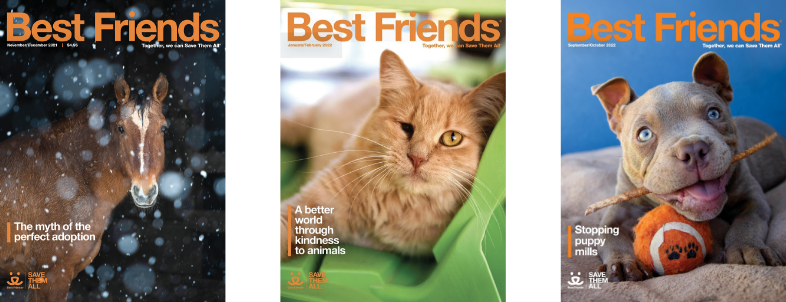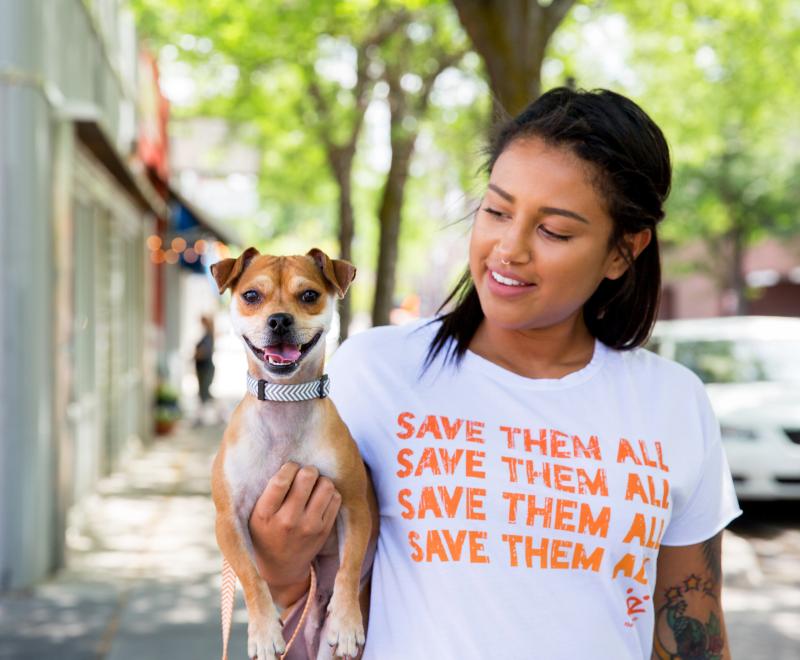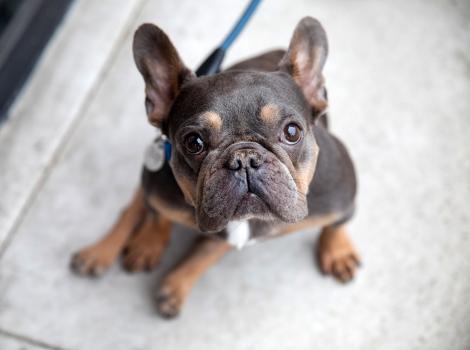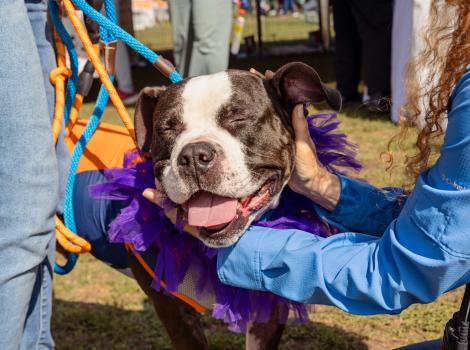The evolution of Best Friends Animal Society

As one of the co-founders of Best Friends, I am asked this question most often: “Does what Best Friends has become match the vision you and the other co-founders had when you started it back in 1984?” To which I jokingly reply, “Our only vision was how to get to tomorrow.”
That’s not true, of course. We always had grandiose visions of changing the world and ending the killing in shelters, but there was no path, plan, or business model that we were following. For all intents and purposes, the group of eccentrics who were shoveling sand and rescuing strays in a remote desert community had about as much chance of changing the world as flying to the moon by flapping our arms.
I am also caught short when someone says, “You must be very proud of all that Best Friends has accomplished,” implying that I or we built this. Pride is what I feel when I get my quirky old motorcycle running reasonably well. My relationship to what Best Friends has become is better described as awe. Apparently, Best Friends is something that was supposed to happen, and I am a very fortunate witness to its unfolding. And I’m confident that each of my co-founders is equally gobsmacked by where we find ourselves.
That sounds like humble bragging, but co-founder Faith Maloney said this in an interview (which I recorded with her shortly before she passed last year) when I asked how she felt about her legacy: “I don’t see any of this (i.e., all that she did over the years in her various roles at Best Friends) as my legacy. If anything is our legacy, it’s that we always looked to the next horizon and pushed out ideas and goals that sounded impossible, like the idea of no-kill or gathering people from all over the world around the idea that kindness to animals can build a better world.”

The possibility of founder’s syndrome
Best Friends and the impact of the no-kill philosophy and the message of kindness have outgrown anything that we can claim credit for, but one thing we are genuinely proud of is the decision we made in 2004 to begin the process of handing over the responsibility of leadership to a new generation. It wasn’t easy, but the possibility of founder’s syndrome was looming. Founder-run organizations, whether in the for-profit or the nonprofit sector, can easily fall into a trap when the founders hang around too long and fail to plan for the inevitable — not only old age and death but a time when their knowledge base is inadequate in a rapidly changing world.
Initially, Best Friends was like Doc Brown’s DeLorean time machine in the Back to the Future movie franchise: one of a kind in every way. We didn’t have an organizational chart, and decisions were made by consensus and communicated by body language or individual founders just deciding to do stuff that sometimes worked and sometimes didn’t. As Best Friends grew and hit the boundaries of our talent in technical areas of our work — such as data and other types of management, IT, direct mail, events, and marketing — we brought in specialists to run these areas.
[How a handful of animal lovers changed the world for homeless pets]
That, however, created an environment of circular reporting: The founders were reporting to the specialists while wearing one hat, but the specialists were reporting to the founders as leadership and members of the board. It was not a tenable situation and certainly not one positioned for growth. The more people we hired, the more confusing some things got. There were no straight lines of communication, and the old practice of decision-making by consensus and communicating via body language left the new folks, who came to us from other professions just hoping to make a difference for the animals, pulling their hair out.
Things had to change, so in 2005 we hired a facilitator who had seen this movie before. All concerned were invited to speak in a safe space, and all that the founders had to do was agree to listen, learn, and accept the unvarnished truth. It was not fun, but there was plenty of legitimate feedback pointing to the structural issues that we had created by default and the thwarting of talent that had resulted.

The elephants in the room
As it happened, the founders were the elephants in whatever room we entered. After a few months of periodic facilitated sessions, it was concluded that the best thing we could do for the future of Best Friends was to go stand in the proverbial corner until the new structure of Best Friends — with an organizational chart that reflected the reality of how we worked — had a chance to go through its shakedown period. The founders still sat on the board, and we filled roles in the organization in non-leadership positions.
It was painful and awkward, but we survived and the structure that emerged, complete with divisions and departments, enabled new leaders to arise and allowed the founders to each slot into their optimal roles. It would take until 2009 for us to formulate a board of directors with a majority of non-founders seated and for Best Friends to start looking like the organization we have today.
The origin story of Best Friends is indeed magical and serendipitous. We refused to accept the status quo of animal welfare, and every step we took was a step into the unknown. We recognized the public sentiment and potential public activism in favor of saving cats and dogs in shelters, but it was because of our willingness to hand the organization off to a new generation of leaders that Best Friends has now begun to realize the preferred future that the founders envisioned.
Today, Best Friends continues to look to the next horizon and push out ideas that challenge the status quo. A new generation of leadership, under our CEO Julie Castle, has taken the ideas and vision of the founders and turned them into the world-changing no-kill movement we could only imagine when we started Best Friends. At the 2016 Best Friends National Conference, Julie’s declaration to lead the country to no-kill in 2025 was greeted with cheers of approval by the founders and energized engagement in supporting roles.

Transformation by a new generation of leaders
The new generation of leadership has transformed Best Friends, which began as a small group of friends operating in a remote red-rock canyon in southern Utah, into a diverse, multiracial, multi-cultural organization of nearly 900 staff committed to bringing the entire country to no-kill. The health and well-being of our employees are prioritized, along with a focus on continuing to make Best Friends more diverse, equitable, and inclusive, consistent with our compassionate mission and our guiding principles.
Currently, we have programs and team members working with or within shelters with the greatest lifesaving needs, including our neighbors on the Navajo Nation. In addition, we have partnered with Southern Utah University to create certified college-level leader-ship courses for people working in the no-kill movement.
This transformation has all taken place on Julie’s watch, but when pressed, she (like the founders) will tell you that there’s something much larger at work than the leadership skills she brings to Best Friends. She will say something like this: “If we do the right thing, there is a universe of possibilities at our disposal.” She will tell you that the right thing to do is to end the killing of animals in this country’s shelters in 2025. She pursues that goal with single-minded determination and welcomes all who believe that we can build a better world through kindness to animals.
I’ve seen some of my fellow founders and friends pass away over the years, with last year being a particularly hard one. With those losses, it becomes ever more important to know that this dream, this vision, this organization we started in 1984 will live on after us. Because the work being done matters. Because it’s essential. So, when I’m asked if I am proud of all that Best Friends has accomplished, what I now say is that I am most proud of our willingness and commitment to passing the baton and identifying whom to pass it to.

This article was originally published in the November/December 2023 issue of Best Friends magazine. Want more good news? Become a member and get stories like this six times a year.
Let's make every shelter and every community no-kill in 2025
Our goal at Best Friends is to support all animal shelters in the U.S. in reaching no-kill in 2025. No-kill means saving every dog and cat in a shelter who can be saved, accounting for community safety and good quality of life for pets.
Shelter staff can’t do it alone. Saving animals in shelters is everyone’s responsibility, and it takes support and participation from the community. No-kill is possible when we work together thoughtfully, honestly, and collaboratively.







